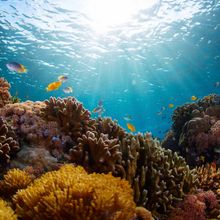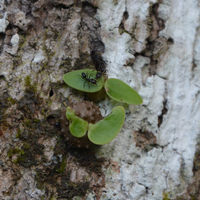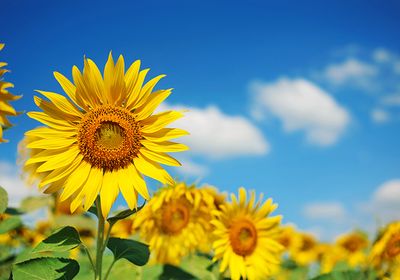Login
Subscribesunlight

Sun Exposure Triggers Hunger in Men but Not Women, Study Suggests
Shafaq Zia | Jul 12, 2022 | 4 min read
Ultraviolet radiation leads to secretion of an appetite-boosting hormone in male mice, but experts say it’s not yet clear whether the mechanism applies to humans.

Corals and Sea Anemones Turn Sunscreen into Toxins—Understanding How Could Help Save Coral Reefs
Djordje Vuckovic and Bill Mitch, The Conversation | May 6, 2022 | 6 min read
Researchers have long suspected that an ingredient in sunscreen called oxybenzone was harming corals, but no one knew how. A new study shows how corals turn oxybenzone into a sunlight-activated toxin.

Vitamin D Deficiency Drives Opioid Addiction in Mice
Amanda Heidt | Jun 16, 2021 | 5 min read
Mice with low vitamin D had exaggerated craving for opioids and felt the drugs’ effects more strongly—results supported in part by human medical records—suggesting that supplements should be explored as treatments for opioid use disorders.

Image of the Day: Farming Ants
Amy Schleunes | Jan 22, 2020 | 2 min read
Evolution imbued ants with an agriculture strategy that optimizes food rewards.

Even Healthy Tissues Carry Clusters of Cells with Mutations: Study
Ashley Yeager | Jun 7, 2019 | 2 min read
Most of the genetic alterations are harmless, but some may contribute to cancer.

Sunscreen Ingredients Absorbed into Blood: Study
Catherine Offord | May 7, 2019 | 2 min read
FDA researchers report that multiple active ingredients wind up in users’ bloodstream and recommend toxicology testing to investigate the clinical significance of the findings.

Solar-Powered Yeast Are More Efficient Drug Factories
Ruth Williams | Nov 15, 2018 | 3 min read
Researchers have outfitted brewer’s yeast with light-harvesting semiconductors to boost chemical productivity.

Could a Dose of Sunshine Make You Smarter?
Ruth Williams | May 17, 2018 | 3 min read
Moderate ultraviolet light exposure boosts the brainpower of mice thanks to increased production of the neurotransmitter glutamate.

What the Sun Does to Photoreceptors
Catherine Offord | Aug 16, 2017 | 4 min read
Optometrist and eclipse-chaser Ralph Chou describes how even a partially eclipsed sun can damage the eye.

Light Scattering Varies Among Corals
Ashley P. Taylor | Jul 13, 2017 | 3 min read
A new study reports which types of corals make the most of the sunlight they receive.

Next Generation: Nano Sunblock
Anna Azvolinsky | Sep 28, 2015 | 3 min read
A new nanoparticle-based sunblock is effective, long-lasting, and may eliminate absorption of potentially harmful chemicals into the skin and bloodstream, a mouse study shows.

Light Lowers Blood Pressure
Tracy Vence | Jan 20, 2014 | 3 min read
UVA exposure reduces human blood pressure by releasing nitric oxide metabolites from storage in the skin.

Dung Beetles Navigate by Sunlight
Jef Akst | Jan 7, 2014 | 1 min read
Shortly after demonstrating dung beetles’ ability to navigate by the stars, researchers in Sweden provide evidence that the insects can also use the sun to find their way.

Electric Lights Alter Daily Rhythms
Kate Yandell | Aug 6, 2013 | 1 min read
Humans’ circadian clocks become skewed when they are exposed to electric lights but revert to a schedule more in tune with the sun when they go camping.
Inside the mind of Fritz Kahn
Cristina Luiggi | Feb 1, 2011 | 1 min read
For more than 40 years, German gynecologist and legendary science writer Fritz Kahn (1888-1968) captured the imagination of an international audience with hundreds of wildly inventive illustrations and more than a dozen popular science books.
Light Therapy, circa 1939
Cristina Luiggi | Feb 1, 2011 | 2 min read
Around the turn of the 20th century—before sunscreens hit the market and the damaging effects of UV radiation were widely appreciated—physicians saw the sun mostly as a source of healing.
